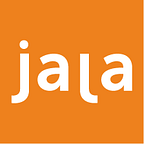Design Sprint: How we designed a new feature in 4 days
A few months ago, more specifically in February, I participated in my first design sprint. I was tasked with facilitating the design sprint with my colleagues, but with no prior experience, it was nerve-racking trying to prepare myself for it.
If you have not heard of the term “design sprint” before, it is a five-phase design-thinking process that aims to answer critical business questions and problems quickly without building and launching a product. This is through the use of design, prototyping and testing.
During the design sprint, the team discusses and identifies problems, designs potential solutions, and tests them with real users. It typically spans across five days, but we followed a new framework that only takes four days, and requires the whole team to be present for two.
The framework looks like this:
Day 1: Map and Sketch
The morning of the first day is all about defining the challenge we want to solve, through discussion, setting long term and short term goals for Jala, and mapping out the user journey to our goal.
In Jala, we feel that it is important to make Jala a platform that is not only sustainable for translators in the long run, but also a place where project owners could get reliable translations. Some questions we wanted to answer in this sprint include how we could ensure a consistent flow of projects to retain translators on the platform, and guarantee quality translations.
In the afternoon of the first day, the team breaks up to do individual research and sketch ideas and solutions to the problem that we would later present.
Day 2: Decide and Storyboard
With that, it is time to present our ideas to one another. On the second day, all solutions get displayed, and the team goes around to place stickers on their favourite aspects of each idea. This creates a heat map of the team’s favourite features, after which the team leader decides on a solution to build the prototype on, while borrowing features from other ideas. During the second half of the day, the team creates a storyboard that consists of six action steps, to translate the concept into a linear order for the user. With that, the team will be able to start creating a sketch of the prototype for the next day.
Taking our sprint goals and questions into account, we finally came up with the idea to introduce a payment system for the platform, so that translators can get paid for their service, while ensuring that quality translations will be delivered in a timely manner for project owners.
Some attributes we think are important for this new feature are that it :
- Allows translators to be verified for their skills so that they appear more credible.
- Allows translators and project owners to negotiate a price between them will also allow for both ends to be satisfied with the service.
- Makes the translation process a collaborative effort by giving both ends the freedom to comment on the project in real time to help streamline the revision process.
Day 3: Prototype
On the third day, only the UI/UX designers working on the prototype are needed, with occasional check-ins from the rest of the team during the day. It is also important to note that the prototype design is not a draft of the solution, and should only be a skeleton that includes key concepts for user testing on day 4.
Day 4: Test
And now comes the time to test out our idea. Some of you might recall seeing our social media posts recruiting people for a user test, and that was exactly for this purpose. In order to determine the effectiveness of our prototype, it is important to have real users try out the prototype themselves and provide feedback. The user tests will help you check if the user understood the concepts of the solution, and whether it solves the problem defined in day 1.
Overall Thoughts
Having experienced the process of developing a new feature for Jala from day one, I can safely say that it is not as easy as it seems. A huge amount of consideration is needed to ensure that what you are developing is meeting the needs of your users, and fulfilling your goal.
Conducting a design sprint also highlighted the importance of editing — that is, deciding what to include and what not to include. Coming to a consensus on which features to include in our solution was the biggest challenge during the design sprint. As much as we would like to include all of the ideas we came up with, it is just not possible to squeeze ten new ideas into a single feature. Drawing our focus back to the sprint goal and questions allowed us to take a step back and evaluate which aspects were most important, and which could be set aside for the future.
Ultimately, although it was an intense four days for Jala, a design sprint was a great way for us to exercise our creativity.
Please stay tuned for the launch of this new feature. We can’t wait to show it to you!
Written by Chrystal Hooi
